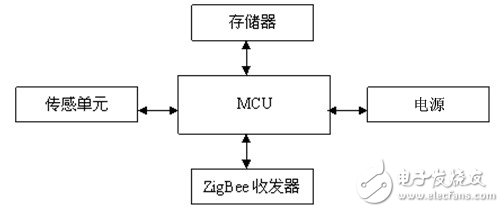1 Introduction With advances in technologies such as microelectronics and computers, the emergence of a new generation of small, mobile, and powerful computing devices has been promoted. But people are not satisfied with the independent work of each device, but they hope that they can work according to people's needs and pursuits, that is, to achieve the concept of "calculation to think of this". So a network that can interconnect all the devices in a small area - the wearable network came into being. The so-called wearable network refers to a combination of short-range wireless communication technology (Bluetooth and ZigBee technology, etc.) and wearable technology (wearcomp) technology, which is worn on the human body and has intelligent information for collecting human body and surrounding environment. A new personal area network concept (PAN). 2 Bluetooth and ZigBee-based wearable network architecture The wearable network is flexible and mobile, and the access modes of the external network are various: it can be connected to the internet at full speed by LAN, ADSL, etc. through Bluetooth gateway, Bluetooth set-top box, etc.; when it is widely mobile, it can be connected by Bluetooth mobile phone. The means to make the wearable network have strong mobility. The architecture of the wearable network currently considered is shown in Figure 1. Devices in the system include a host, a Bluetooth device, a ZigBee device, and a Bluetooth/ZigBee gateway. 2.1 Host part Wearable computers require the host to be lightweight and small due to its wearability. The host chip uses the Linux embedded operating system, which integrates the Bluetooth protocol stack. The main purpose of integrating a Bluetooth adapter in a host is to enable the host to communicate with other Bluetooth devices. A GPS module or the like can also be integrated in the host if conditions permit. 2.2 Bluetooth device The Bluetooth device in the wearable network is a miniaturized device with a built-in Bluetooth module, and the data collected by the device is transmitted to the host through the Bluetooth link or transmitted in reverse. Head-mounted display system: integrated micro-Bluetooth module, camera, DSP chip. First, the initial image is captured by the camera and sent to the DSP chip for pre-processing to remove the redundancy of the video and image signals. The video compression standard can be MPEG-4. Signals processed by the DSP can be sent directly to the display or sent to the host for further processing. Bluetooth headset: It can realize audio signal transmission with other Bluetooth devices, control the host through voice commands, or transmit voice signals to the remote end through GPRS, CDMA, TD-SCDMA networks. Figure 1 Bluetooth and ZigBee-based wearable network architecture 2.3 ZigBee device ZigBee devices can be designed as watch styles, insoles, and the like. It includes sensors, A/D converters, and ZigBee modules. The sensor collects external signals (heartbeat, blood pressure, pulse, temperature, dry humidity, etc.) and converts them into electrical signals, which are then converted by the A/D converter and sent to the MCU, and finally passed through the ZigBee transceiver module and sent to the gateway. Host. After being processed by the host, it is transferred to other devices. 2.4 Bluetooth/ZigBee Gateway The Bluetooth/ZigBee gateway mainly deals with the communication between two different standard Bluetooth and ZigBee products in the wearable network wireless communication. The protocol model is shown in Figure 2. Figure 2 Communication protocol model of Bluetooth/ZigBee gateway 3 Hardware implementation of wearable network based on Bluetooth and ZigBee In the architecture of the wearable network introduced in this paper, the main need to implement the hardware platform of ZigBee nodes and gateways. The hardware implementation of these two platforms is introduced below. 3.1 Hardware implementation of ZigBee node As a sensor, the ZigBee node's main function is to collect data of interest to people and send the data to the Bluetooth/ZigBee gateway, and then send it to the remote control center or database through GPRS, CDMA or WI-FI. The ZigBee node is mainly composed of a power module, a microcontroller module, a storage unit, a ZigBee transceiver module, and a sensing unit, as shown in FIG. Figure 3 ZigBee node hardware block diagram
Catering to the ever-changing demands of our patrons, we are offering them a comprehensive range of Hot Dip Galvanized Radiator. These are manufactured as per latest market trends so as to ensure their wide applications in industries. Offered products are highly demanded by the clients for their excellent design, longer service life and durability.
Galvanizing is a way of defending a steel surface from corrosion by delivering a surface coat of Zinc. The process is carried out by dipping the radiator in molten zinc bath which is upheld at a temperature of about 450 degrees.
Hdg Radiator,Oil-Immersed Hdg Radiator,Hot-Dip Galvanizing Radiator,High-Performance Hot Dip Galvanized Radiator Shenyang Tiantong Electricity Co., Ltd. , https://www.ttradiator.com

